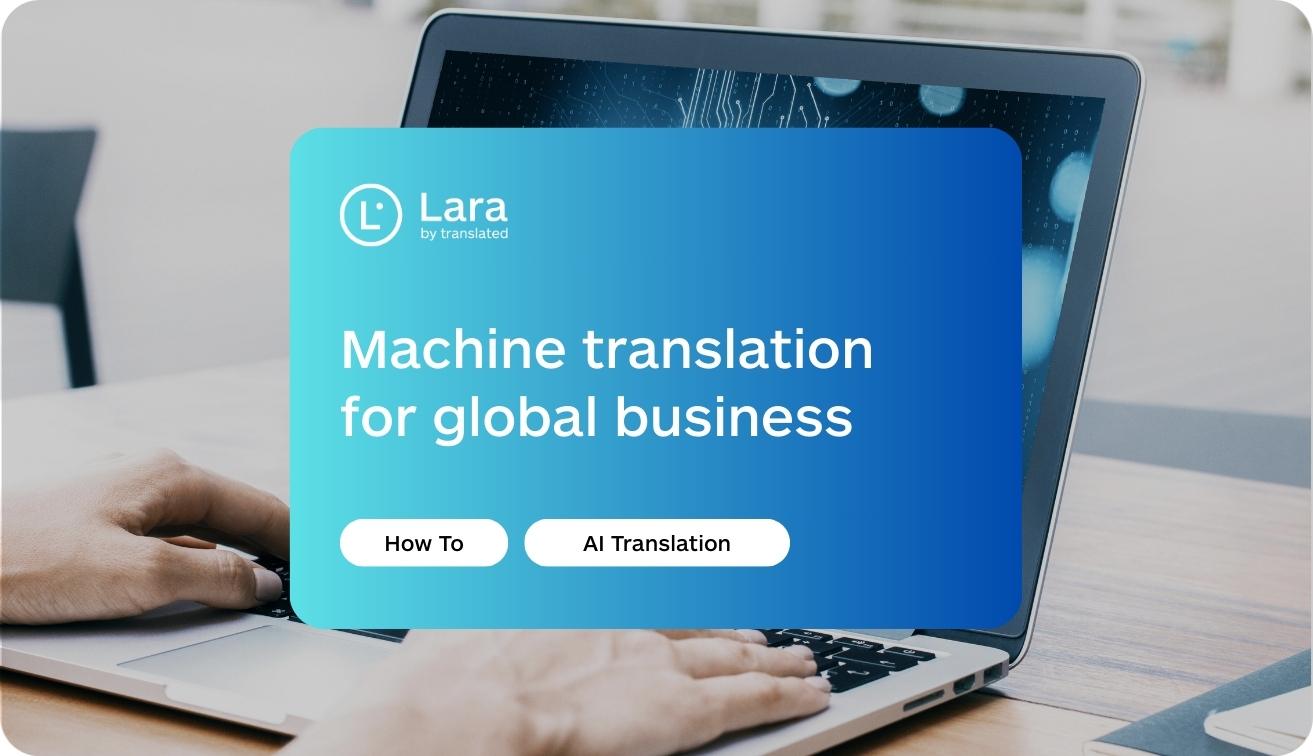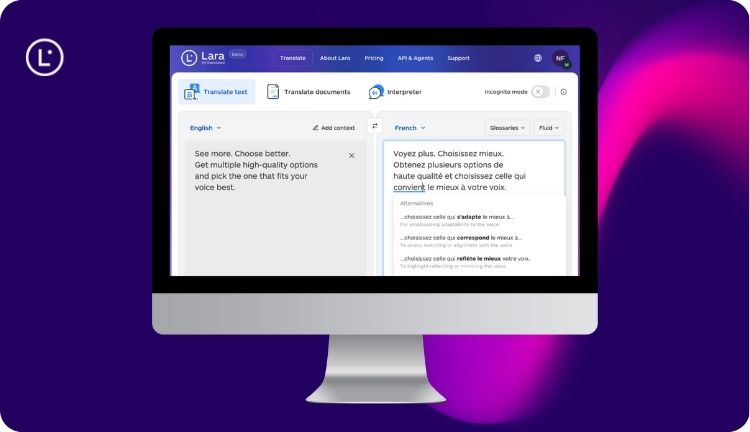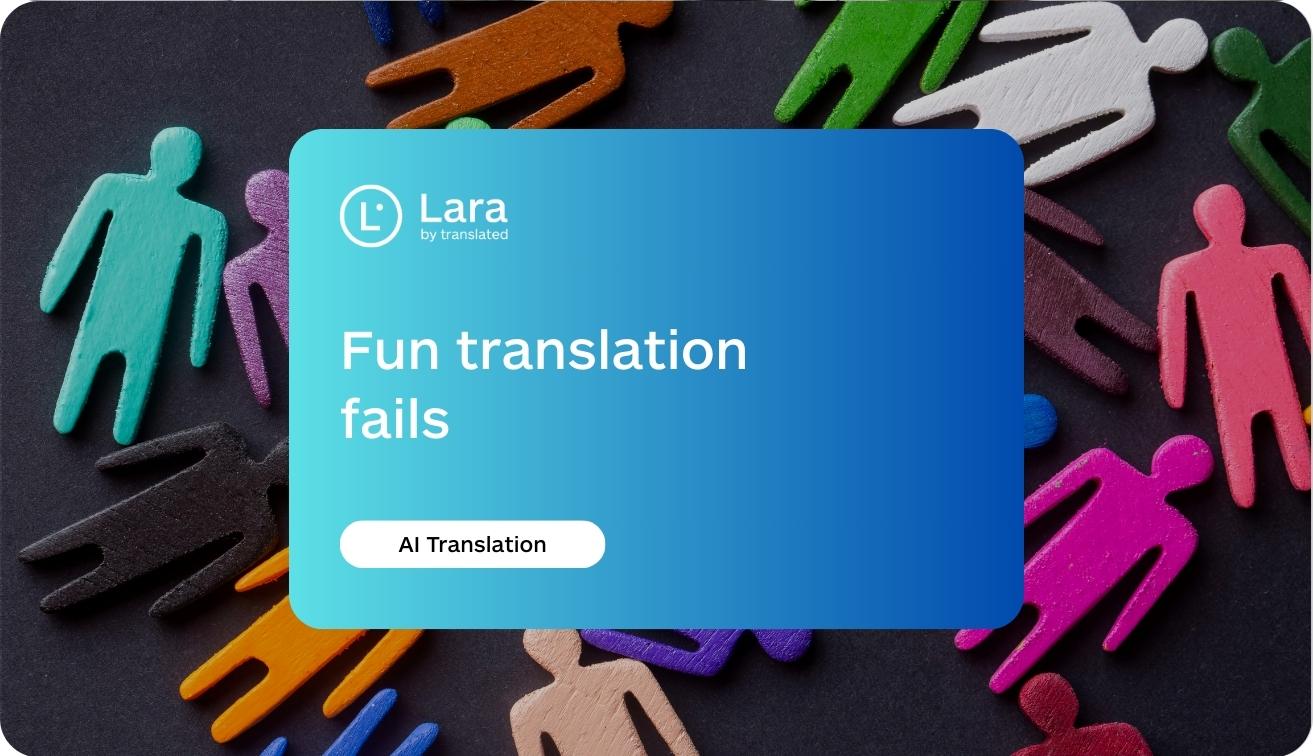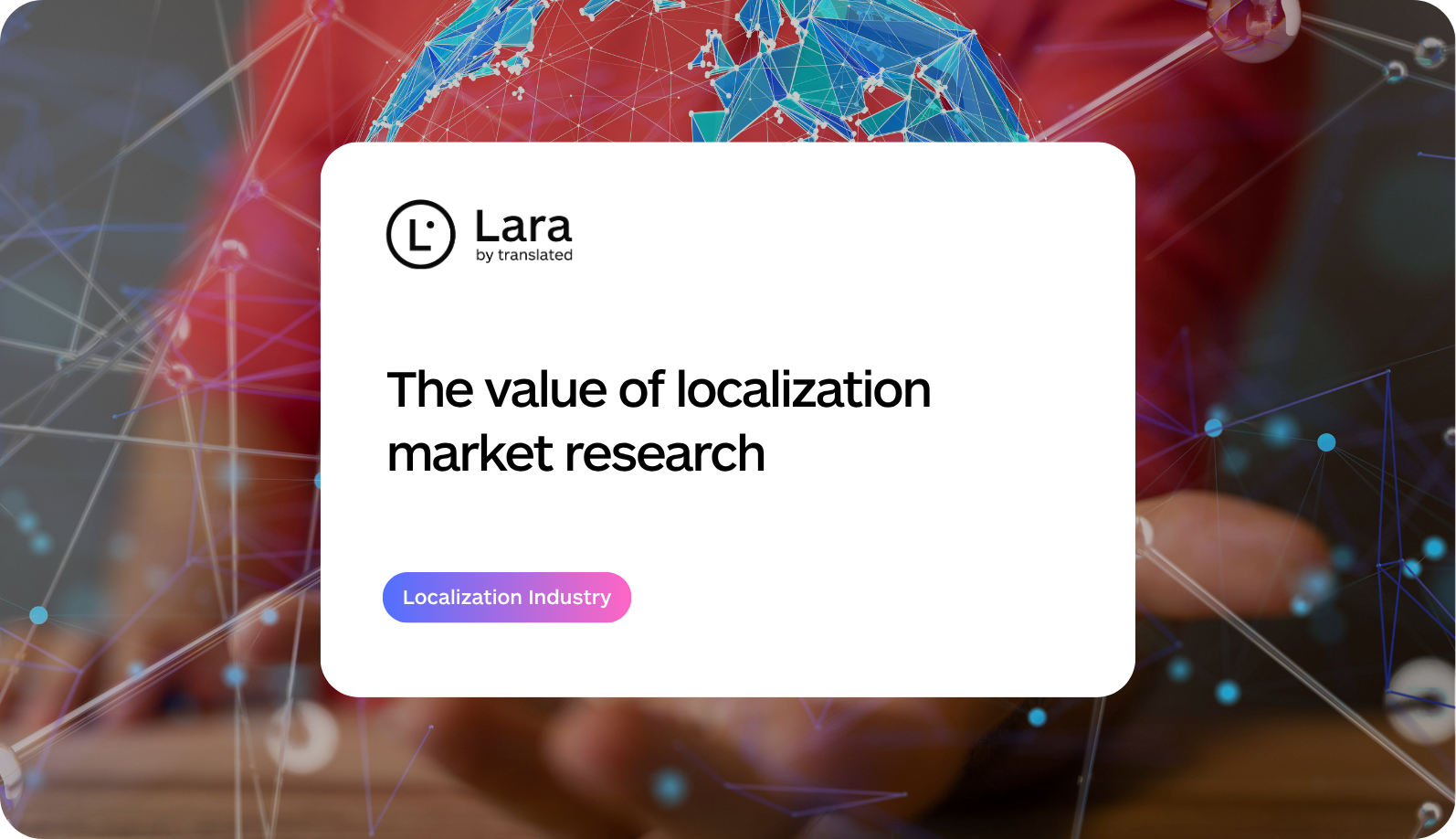For companies with big growth goals, going global isn’t a choice anymore, it’s a must. Being able to communicate clearly across languages has become a real competitive edge, and machine translation is changing the game when it comes to to global business expansion.
Whether it’s ecommerce sites tailoring product descriptions for shoppers around the world or global companies making internal communications easier, AI-powered language tools are tearing down the walls that once made global business complicated and expensive.
The evolution of machine translation in business
Just a few years ago, machine translation was often viewed with skepticism by business professionals. Early translation tools delivered awkward, sometimes comical results that could potentially damage brand reputation rather than enhance it. However, the landscape has dramatically changed with the advent of neural machine translation (NMT) and transformer models that have significantly improved accuracy and fluency.

Today’s AI translation systems can process context, industry-specific terminology, and even subtle cultural nuances that were previously only possible with human translators. This evolution has transformed machine translation from a curiosity into a powerful business tool enabling global growth with machine translation at unprecedented speed and scale.
How AI speeds up translation processes for global businesses
Traditional translation processes often created bottlenecks in business operations. Documents requiring translation would be sent to agencies or in-house linguists, resulting in delays of days or weeks before materials could be deployed in new markets. This created significant friction in the global business expansion process.
Machine translation for business expansion has transformed this timeline in remarkable ways:
- Real-time communication: Customer support teams can engage with international clients instantly, without language barriers
- Rapid content localization: Marketing materials can be adapted for multiple markets simultaneously
- Efficient document processing: Technical documentation, contracts, and internal communications can be translated in minutes rather than days
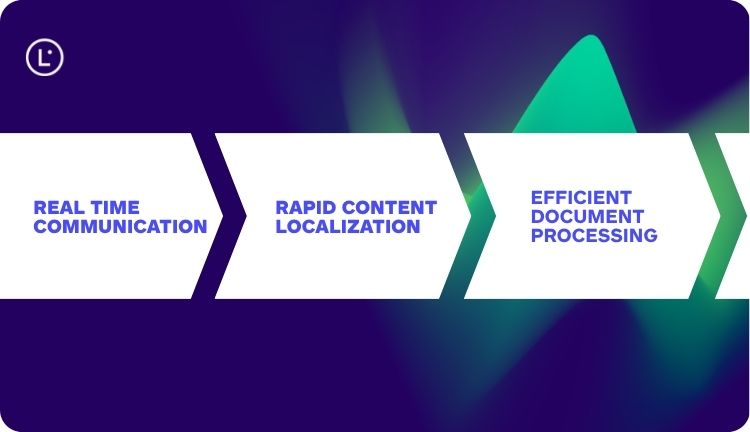
The ability to move quickly has become particularly valuable in fast-changing market conditions. Companies using AI-driven international strategies can respond to opportunities and challenges in new markets with agility that was previously impossible.
Cost savings and efficiency gains from automating translations
Perhaps the most compelling business case for machine translation in global marketing comes from the significant cost reductions it enables. Traditional human translation services typically charge $0.10-0.30 per word, making comprehensive localization prohibitively expensive for many organizations.
Modern machine translation services have dramatically changed this equation. According to industry data, businesses implementing AI-powered language solutions are experiencing:
- 60-80% reduction in translation costs compared to traditional methods
- 70% faster time-to-market for products and services in new regions
- 45% increase in website engagement when content is properly localized
These cost savings from MT in business don’t just benefit large enterprises. Small and medium-sized businesses that previously couldn’t afford extensive translation services can now compete globally with minimal language investment, creating a more level playing field.
How Lara Translate enhances global business operations
Among the advanced solutions transforming the business translation landscape, Lara Translate stands out with its innovative approach to multilingual automation. Powered by the Model Context Protocol (MCP), Lara’s technology goes beyond basic translation by understanding complex contextual relationships in business content.
Lara Translate’s MCP Server has been specifically designed to meet the demands of business users, offering seamless integration with existing workflows through its robust API. This technology enables businesses to process everything from technical documentation to marketing materials with industry-specific terminology accuracy.
What makes Lara particularly valuable for global business expansion is its combination of speed and accuracy. Companies that have implemented Lara have reported significant improvements in both the quality of translations and the efficiency of their localization processes, allowing them to focus on market strategy rather than language logistics.
Machine translation vs. human translation: finding the right balance
Despite tremendous advances in AI globalization tools, human translators still play a vital role in certain aspects of business expansion. Understanding when to leverage machine translation and when to involve human expertise is crucial for efficient internationalization.
When machine translation excels:
- High-volume content translation (product catalogs, support documentation)
- Internal communications and knowledge bases
- Initial drafts that will be reviewed by native speakers
- Real-time communication needs
When human translation remains essential:
- Brand-defining content (slogans, taglines, core messaging)
- Culturally sensitive materials
- Legal documents requiring certified translations
- Creative marketing campaigns with wordplay or cultural references
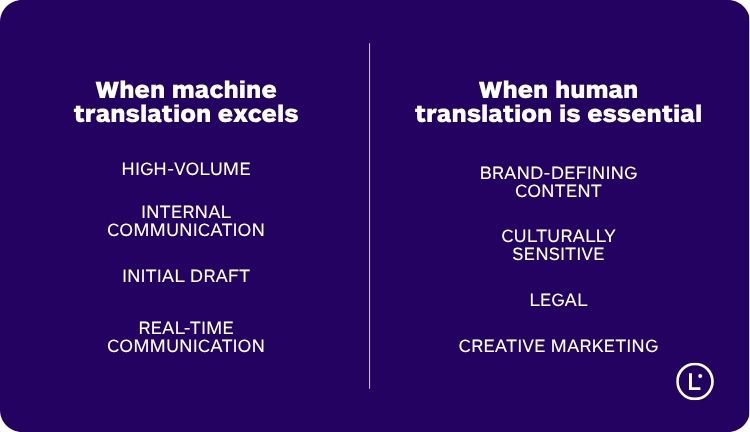
Most successful global businesses are now implementing hybrid approaches, using real-time translation tools for rapid, large-scale content generation while bringing in human linguists for refinement and cultural adaptation. This balanced strategy maximizes both efficiency and quality.
Real-world examples of AI in international expansion
To truly understand the impact of AI translation on global commerce, let’s examine how diverse businesses have leveraged these technologies for competitive advantage.
E-commerce transformation
Major online retailers have implemented machine translation to localize millions of product descriptions, customer reviews, and support content. One leading marketplace reported a 25% increase in cross-border sales after implementing AI translations for product listings, highlighting how automating translations for global markets directly impacts revenue.
Manufacturing and technical documentation
A global industrial equipment manufacturer reduced documentation translation costs by 65% while cutting time-to-market in new regions by half. By using machine translation for their extensive technical manuals and maintenance guides, they could deploy new products globally almost simultaneously rather than in staggered regional releases.
Global marketing campaigns
Several multinational brands now use machine translation as the first step in creating unified marketing campaigns across dozens of markets. This approach allows central marketing teams to maintain message consistency while still enabling regional teams to refine culturally specific elements — demonstrating how AI in global marketing supports both efficiency and effectiveness in global business expansion.
Best practices for implementing machine translation in your business
Organizations aiming to leverage machine translation for global business expansion should consider these strategic approaches:
- Start with clear objectives: Define what success looks like – is it cost reduction, faster market entry, or improved customer experience?
- Choose specialized solutions: Select translation tools optimized for your industry and content types rather than generic platforms.
- Implement quality assurance processes: Establish review workflows for machine-translated content, particularly for customer-facing materials.
- Develop terminology databases: Create and maintain glossaries of brand-specific and technical terms to improve translation accuracy.
- Train your teams: Ensure staff understand how to effectively work with machine translation tools, including how to write content that translates well.
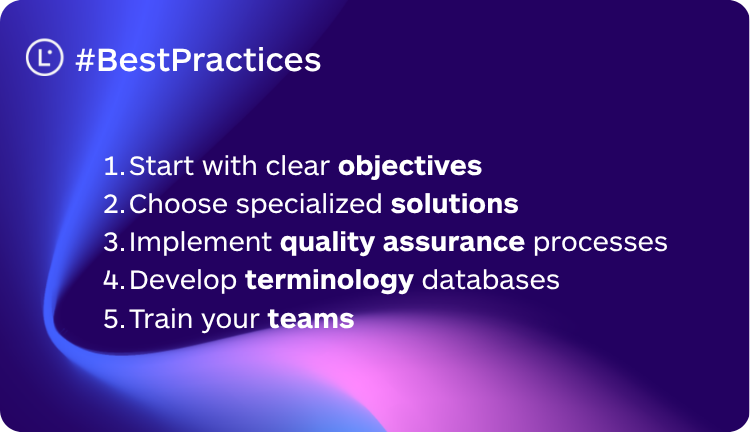
Many organizations find that learning how to optimize content for better machine translation from the beginning dramatically improves outcomes and reduces the need for extensive post-translation editing.
The future of machine translation in global business
As we look ahead, several emerging trends will likely shape how global growth with machine translation evolves:
- Multimodal translation: Beyond text, AI systems are increasingly capable of translating audio, video, and even visual content in real-time.
- Embedded translation: Translation capabilities will become seamlessly integrated into more business applications rather than requiring dedicated tools.
- Personalized localization: AI systems will adapt content not just for language but for regional preferences, demographics, and even individual user behavior.
- Continuous learning: Translation engines will increasingly improve based on specific company usage patterns and feedback.
Business leaders who understand and prepare for these developments will be best positioned to capitalize on the next wave of opportunities in business globalization.
Conclusion
The integration of machine translation in global marketing and operations represents one of the most significant developments in international business strategy of the past decade. By dramatically reducing costs, accelerating expansion timelines, and improving customer experiences, AI-powered language solutions have transformed what’s possible for companies with global ambitions.
For organizations pursuing global business expansion, these technologies offer more than just translation efficiency – they provide a fundamental competitive advantage in the ability to move quickly, communicate effectively, and build authentic connections with customers and partners around the world.
As machine translation for business expansion continues to evolve, the gap between companies that embrace these tools and those that rely on traditional methods will likely widen. Forward-thinking business leaders should evaluate how these technologies can support their specific globalization objectives and develop strategic implementation plans accordingly.
FAQ: Machine translation for business
How accurate is machine translation for business content?
Modern neural machine translation systems achieve accuracy rates of 85-95% for most business content, with higher accuracy for technical documentation and lower accuracy for creative or culturally nuanced content.
What business content types benefit most from machine translation?
High-volume, structured content like product descriptions, support documentation, internal communications, and standard business correspondence typically see the best results.
How can businesses measure ROI from implementing machine translation?
Key metrics include translation cost reductions, time savings in localization processes, increased engagement from international users, and expansion in cross-border sales or operations.
Does machine translation work equally well for all language pairs?
No. Translation quality varies significantly between language pairs. Major European and Asian languages typically have the most advanced translation models, while less common languages may have less sophisticated support.
How can businesses ensure security when using machine translation services?
Organizations should verify vendors’ data handling policies, consider on-premises or private cloud deployment options for sensitive content, and evaluate compliance with relevant data protection regulations.
This article is about:
- How machine translation is driving global business growth through cost savings and language accessibility
- Balancing AI-powered translation with human expertise for effective multilingual communication
- Real-world use cases and best practices for implementing machine translation across key industries
- Future trends in multilingual automation and how tools like Lara Translate support global expansion
